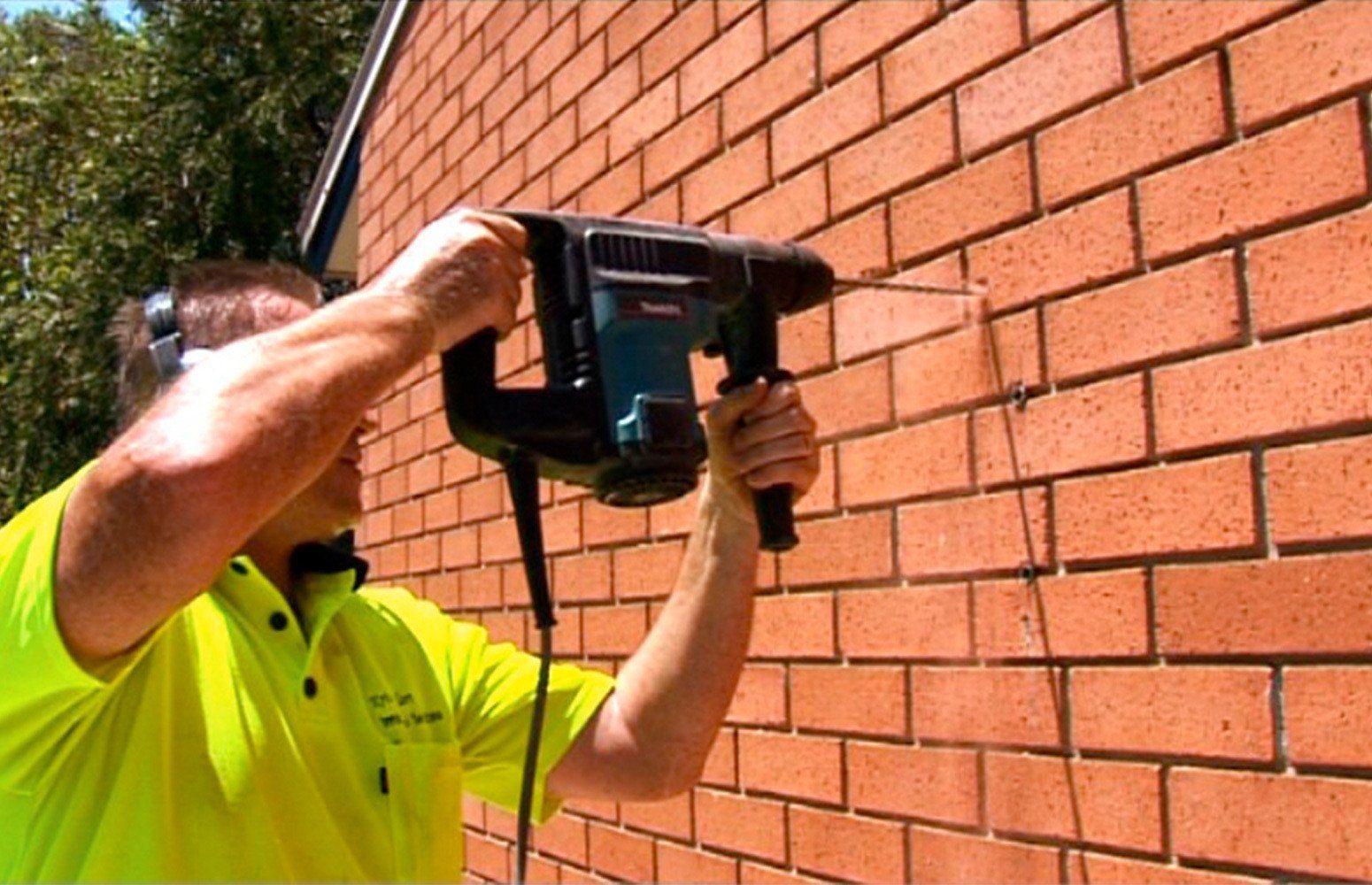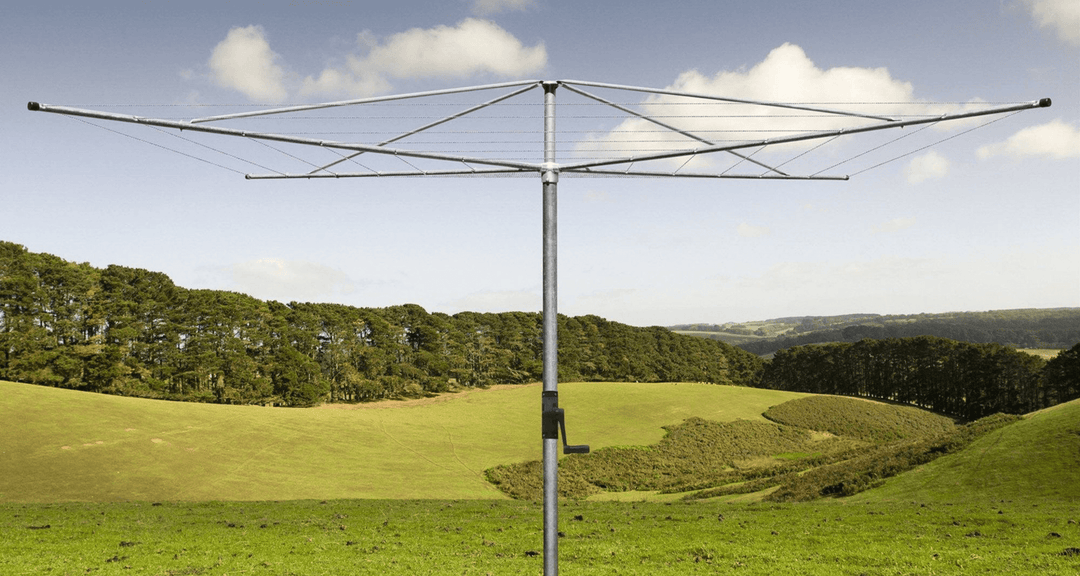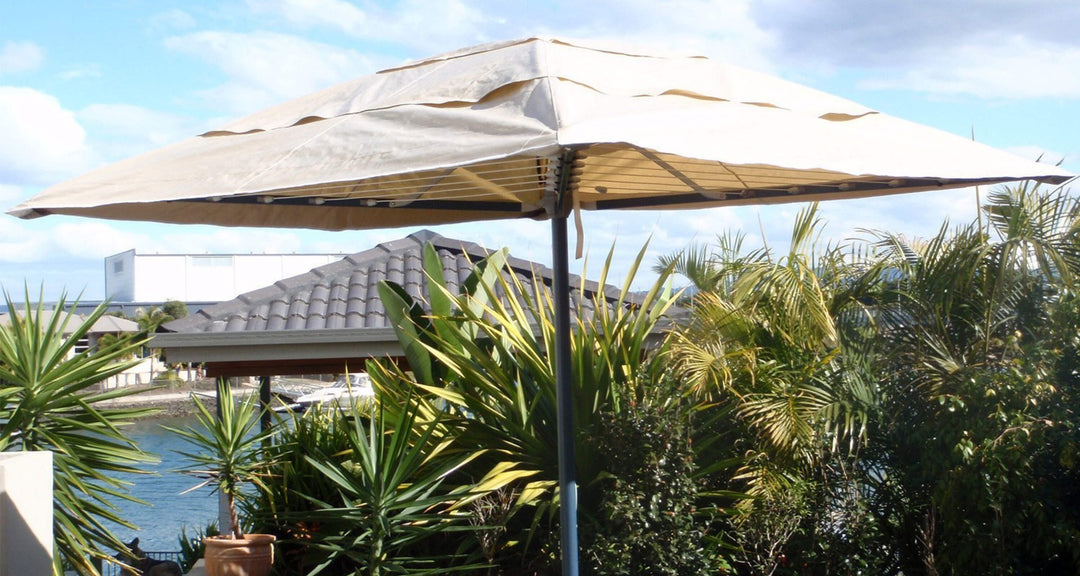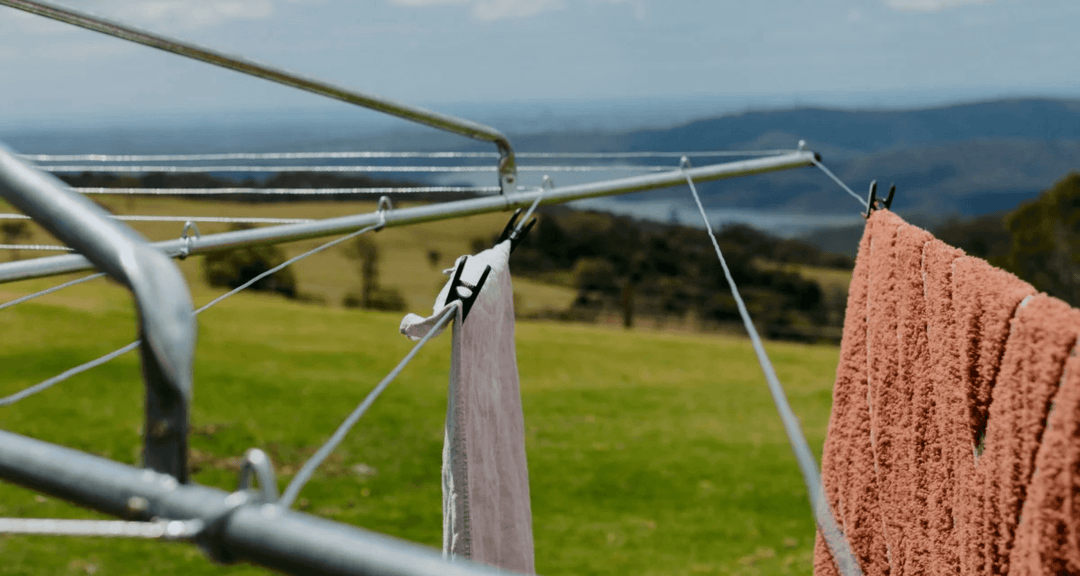How to Keep Clothesline Clean: The Ultimate Guide
Did you know that cleaning your clothesline not only keeps stains away from your garments but also prolongs the life of the clothesline?
A dirty clothesline can cause premature corrosion as well as squeaky gears and hinges.
So in this blog post, we will share the best cleaning and maintenance tips on how to keep your clothesline clean for various types of clotheslines.
So that you get to enjoy the benefits of air drying your laundry while keeping your clothes fresh and clean--without too much effort.
Short Summary
-
Maintain cleanliness of clothesline to preserve quality and freshness.
-
Use effective techniques for cleaning different types of clotheslines, including PVC, cotton & metal.
-
Follow proper hanging techniques and store accessories in a sealed container or bag to maximize performance & longevity.
Maintaining a Clean Clothesline
Keeping your clothesline clean is not only essential for the environment, but also for the quality and longevity of your clothes.
A clean clothesline prevents dirt, dust, and stains from transferring onto your freshly washed laundry, ensuring that your clothes remain clean and fresh.
It also prevents the intrusion of moisture into the metal frame prolonging the life of the whole unit.
Regular maintenance, such as weekly or monthly cleaning, is recommended for optimal cleanliness of your clothesline and ensuring clean laundry.
Cleaning Materials and Tools
For cloth or rope lines from traditional clotheslines, soaking them in a bucket of hot soapy water and vinegar or placing them in a mesh bag or clothes pillowcase and running it through the washing machine are recommended methods.
Regular Maintenance
Regular maintenance of your clothesline is vital for its optimal functioning and maximizing clothesline space for drying your laundry.
It is recommended to clean the outdoor clothesline prior to each use to eliminate any debris or stains.
Additionally, inspect the clothesline on a regular basis for any indications of wear or damage...

...such as tight screws or bolts, oiled hinges for foldable clotheslines, and any signs of rusting that need to be addressed, especially if you hang heavy items like bath towels.
Wiping down the clothesline on a monthly basis to remove dust, tree sap, and bird droppings is also recommended.
This will help to ensure that your clothesline is in good condition and will last for many years.
Effective Techniques for Cleaning Different Clothesline Types
Clotheslines come in various materials, such as PVC, cotton, and metal
Each of these materials require specific techniques and cleaning agents to ensure optimal results.
In the following sections, we will discuss the best cleaning practices for each type of clothesline material.
We also recommend checking the manufacturer's cleaning and maintenance guidelines specific to your clothesline model.
PVC Clotheslines
For PVC clotheslines, start by eliminating any spider webs or debris with a dry cloth.
Then, fill a bucket with warm water and a squirt of dish detergent. Use a sponge or scourer to clean the clothesline with soapy water.
After cleaning, thoroughly rinse the clothesline with clean water and dry it with a soft cloth.
Clotheslines with Cotton Rope
Cotton clotheslines require a more intensive cleaning process due to their propensity to absorb dirt and cause staining.
To clean a cotton washing line rope, use tea tree oil or a strong disinfectant instead of bleach.
Put the rope in a pillowcase or mesh bag before putting it in the washing machine. Afterwards, hang it out to dry.
Metal Clotheslines
Cleaning metal clotheslines involves the following steps:
-
Remove any spider webs and debris with a dry cloth.
-
Mix a mild detergent with warm water.
-
Scrub the clothesline with a sponge or scourer and the soapy water.
The process requires a bit of elbow grease but we guarantee you that the outcome is surely worth it!
After cleaning, rinse the metal clothesline off with clean water and allow it to air dry.
To protect the metal clothesline from rust and corrosion, apply a protective coating.
Preventing Insect Infestations on Your Clothesline
Insects can be a nuisance when they decide to make your clothesline their home.
To prevent infestations, you can employ various techniques, such as using natural repellents or creating physical barriers.
In the following sections, we will discuss these methods in detail.
Natural Repellents
Natural repellents, such as tea tree oil, lavender oil, and citronella oil, are eco-friendly and do not contain any harsh chemicals.
These natural substances can be applied directly to the clothesline or sprayed in the vicinity of the clothesline.
To ensure effectiveness, remember to reapply natural repellents regularly and keep the area surrounding the clothesline uncluttered and free of debris to prevent insects from nesting.
By using natural repellents, you can keep your clothesline insect-free without having to use an insecticide.
Physical Barriers
Physical barriers can be employed to prevent insects from accessing clotheslines, such as:
-
Caulking, sealants, and membranes
-
Wire meshes
-
Stainless steel mesh
-
Particle barriers like sand and basalt barriers
To deter spiders, wrap duct tape around the ends of the washing line with the sticky side facing outwards.
Storing clothespins in a sealed container can also help keep insects from accessing them.
Most especially if your wooden clothespins are starting to age and getting soft, making them enticing for cockroaches to munch on.
Maintenance Tips to Prolong the Life of Your Clothesline
Regular inspections, lubrication, and consistent tightening of bolts or hinges will ensure that your clothesline will provide you with years of worry free usage.
Keep reading below to find out how to do proper maintenance on your specific type of clothesline be it a fold down/portable, retractable, or rotary clothes hoist.
Lubricate Moving Parts
Using silicone-based oil, WD-40, or lanolin oil can keep your clothesline running smoothly and quietly.
The last thing you want to experience are squeaks and creaks every time you use your clothesline, right?
Silicon-based lubricant such as WD-40 High Performance Silicon Lubricant is the quickest and easiest solution to creaky clotheslines.
The best part of all, it's safe for use on pretty much any material used in manufacturing clotheslines so you don't have to worry about using it.
Just spray directly on all the moving parts of your clothesline and you're pretty much good to go!
Plus, with the straw tip makes it easy to spray the insides of your retractable clothesline without having to open it at all.
How to Lubricate a Hills Hoist
Keeping your Hills Rotary Hoist in perfect working order is easy as pie:
-
Wind the hoist to its maximum height.
-
Locate the small hole then pour in about 5 millilitres (1 teaspoon) of lanolin-based oil.
-
Once that's done, apply a few drops of oil through the oil hole which can be found in the gear case (right above the handle shaft).
Voila! You're done!

Always keep in mind that you should use a lightweight silicone oil or a Lanolin-based lubricant for best and long-lasting performance.
This will guarantee the smooth operation of your clothesline, minimises friction, as well as protect the internal moving parts from moisture.
Storing Clothesline to Extend its Lifespan
Proper storage of your clothesline when not in use can help maintain its cleanliness and prolong their lifespan.
Not only will you avoid dirtying the drying lines which garments touch all the time, you are also keeping its moving parts from being exposed to extreme heat and moisture.
This in turn preserves the life and viscosity of the lubricant you just applied keeping all the moving parts from rubbing together excessively until permanent damage occurs.
In the following sections, we will provide advice on how to store your clothesline and accessories effectively if you have a portable, folding rotary, or retractable clothesline.
Store It Away
Popular brands like Hills and Austral offer rotary clotheslines that can be folded up and lifted off the socket when not in use.
While these are very high quality clotheslines you must remember that they're not built to the same degree as standard rotary hoists.
So even if you think they're robust, they still need a bit of sheltering every now and then.
Follow the manufacturer's instructions on how to fold up your specific model of clothesline to ensure it doesn't get damaged prior to storage.
Why Storing Your Clothesline Matters
Most folding clotheslines such as portables and folding rotary clothes line units are made of thing galvanised steel tubing.
This is then protected by a tough powder-coat paint, which, if left basking in the sun for too long, it will eventually lose its sheen.
Once that happens, moisture intrusion is a big possibility that will cause the metal to rust and swell--peeling away the paint.
This will eventually compromise the frame of your clothesline, rendering it irreparable and will most likely need costly replacement.
In the case of retractable clotheslines, you are also keeping the lines from being exposed to the UV rays excessively.
This can eventually cause the PVC coating to become brittle and peel away so always reel the lines back in after every use.
Otherwise, it will soon be requiring an earlier full-on restringing of your clothesline down the road.
Get a Clothesline Cover
If you don't want the added step of having to stow away your clothesline after every use, having a clothesline cover installed is a wise choice.
A clothesline cover can keep the lines and most of the frame from getting too exposed to the harsh elements.
An added bonus of this is your clothes also protected from unwanted stuff like animal droppings, dust, or from the rain!
Frequently Asked Questions
To prevent clothespin marks, hang shirts upside down by the hem and pin pants and skirts at the waistband in an inconspicuous area.
This will help avoid telltale clothespin pinch-marked and stretched outlines.
Wrapping duct tape around the ends of your washing line will keep spiders and insects away from it, as the sticky surface will scare them off or trap them.
This is an effective method to keep cobwebs off clotheslines.
It is not recommended to leave pegs on the line as they quickly perish and can gather dust and debris that will transfer onto your clothes.
Leave them out for prolonged periods of time should be avoided.
Clean your clothesline prior to each use and wipe it down once a month for optimal performance.
To prevent insects from infesting your clothesline, use natural repellents and physical barriers.
Natural repellents can include essential oils, such as lavender, peppermint, and eucalyptus.
These oils can be sprayed directly onto the clothesline or onto the clothesline.
How to Keep Clothesline Clean: Final Words
In conclusion, maintaining a clean clothesline is essential for the environment, energy savings, and the quality of your clothes.
By following the cleaning and maintenance tips provided in this blog post, you can enjoy the benefits of air drying your laundry while keeping your clothes fresh, clean, and wrinkle-free.
Remember to store your clothesline and accessories properly when not in use, and make the most of outdoor conditions by checking weather reports and adjusting your drying routine accordingly.
Remember, your investments will only last as long as you give them proper tender loving care.
Happy air drying with your longer-lasting clothesline!
Disclaimer:
This article contains affiliate links and we may earn a small commission from purchases made through them. Your support helps sustain our blog and allows us to consistently provide valuable content for you. Thank you for your understanding.
 Fold Down
Fold Down

 Rotary Hoist
Rotary Hoist
 Retractable
Retractable
 Portable
Portable
 Ceiling Airer
Ceiling Airer
 Covers
Covers
























